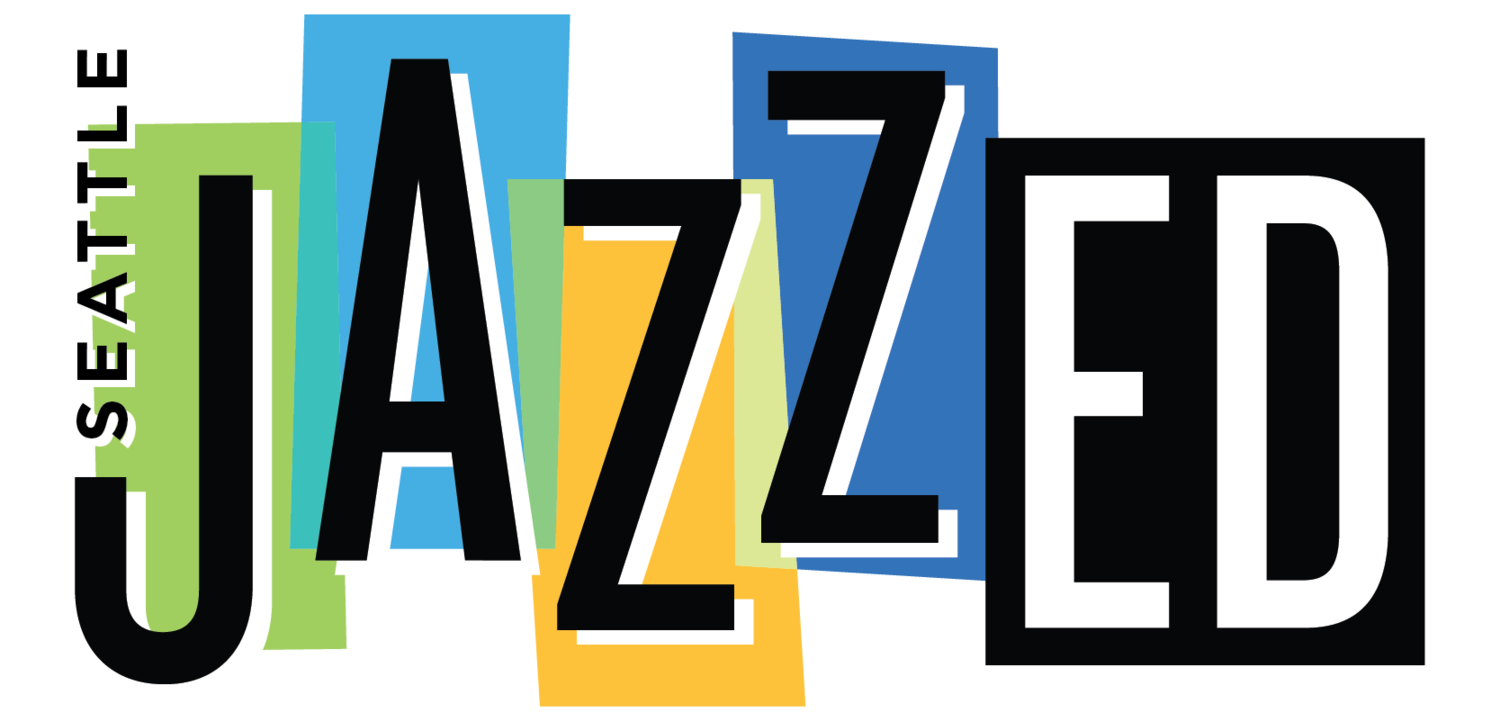The Value of Collaborative Teaching on Music and the Student Experience
/This article is written by Seattle JazzED’s Curriculum Manager and Lead Teacher, BJ Montoya.
BJ Montoya and a student with a violin during Meet your instrument day. Photo by Jocelyn RC.
BJ’s musical journey started as a student of Suzuki Violin Method for over 13 years at the University of Louisville School of Music Prep School. He also performed with the Louisville Youth Orchestra and other small local ensembles. Since arriving in Seattle in 2001, he has been performing in a range of venues from sanctuaries to coffee shops to night clubs. He has been featured in local indie bands, gospel choirs, theater productions and his longstanding Irish party band, Whiskey Mary. His teaching builds from these experiences emphasizing social playing and creative expression through the many dialects that music has to offer whether fiddle, classical or jazz.
Why Collaborative Teaching?
Becoming a music educator can often feel like an isolating proposition. Standing as a singular voice leading a classroom could be both empowering and lonely at the same time. Your voice carries authority, imparting lasting knowledge and modeling techniques that students will absorb and implement in their practice routines. However, from a student’s perspective, learning from a singular authority may provide a limited point of view.
Most programs at JazzED take a team-teaching approach, which helps to decentralize the traditional hierarchy. It models for students what partnership and collaboration can look like. Students also find that there may be multiple “right ways” to approach a tune or technique, which eases the learning curve. Much like collaborating musically, teachers often exchange ideas, enriching the value of lessons for students more than a single voice could. It’s not unlike the jazz tradition wherein each solo is passed from musician to musician adding their own personality and perspective over a common structure of a tune.
As a string educator who has worked as an independent studio teacher, I found it challenging to search and assemble teaching resources that aligned with my values centering creative and social music-making. Since joining the JazzED teaching staff, I’ve developed camaraderie with fellow teachers, exchanging ideas with a roster of highly skilled teaching artists.
Advancing a Creative and Inclusive String Pedagogy
Along with my experience teaching at JazzED, connecting to a network of like-minded string teachers precisely has helped me become a well-rounded modern string teacher. The Association of String Teachers of America (ASTA) and community of creative string players have been a growing resource for my professional development over the years. Last month, I had the opportunity to attend the ASTA National Conference in Louisville, Kentucky for the first time.
Traditionally, ASTA and string pedagogy has centered around school orchestral and ensemble programs. That typically meant teaching within the confines of western European classical traditions. In my growing involvement in the string teaching field and attendance at the ASTA conference, topics of creative and social music making (think jazz, fiddle and modern styles) are starting to enter the conversation. More educators are starting to incorporate ideas like improvisation and blues into their classrooms. And more creative string players (like yours truly) are coming into the fold of teaching, bringing their experience into studios and classrooms.
Some examples of how creative, inclusive music was presented at ASTA:
Christen Blanton demonstrated how she uses pop songs and fiddle tunes to implement ear training and harmony explorations in her middle school orchestra.
Nightly Jams led by Berklee College of Music’s Mimi Rabson taught funk and jazz tunes to a room of hundreds of teachers.
Christian Howes used self-composed loops to lead large group exercises that inspired improvisation and new creative ways to play and teach.
The dynamic trio, Union Biribá, featuring cellist Mike Block and beatboxer Christyles Bacon, was a featured performer sharing original music inspired by global grooves.
A presentation by JazzED’s own Kelly Clingan and Beth Fortune told the story of how they fostered liberated and creative musicians in their middle school fiddle program and the bravery it took to break the mold of what a jazz ensemble could look like.
I had the honor of co-leading a new participatory session that invited new string teachers to explore eclectic styles of string playing during Mini-Jams. I was charged with teaching jazz and blues standards along with fellow multi-style violinist, Duane Padilla. Other mini-jams shared tunes from the Celtic, American Fiddle traditions as well as rock and pop styles.
Many of the principles presented as “eclectic styles” presentations would be familiar to our JazzED educators, such as teaching/learning by ear, emphasizing blues harmony, and encouraging opportunities for creative improvisation.
String teachers leaning into new territories like jazz, fiddle, and non-classical styles are beginning to discover what we’ve know at JazzED about educating creative and collaborative, life-long music makers – that it has the power to liberate and inspire!
If you are a teacher (or know a teacher) looking to incorporate jazz into the classroom, consider joining an upcoming music educator professional development hosted by Seattle JazzED’s Kelly Clingan and Beth Fortune. Learn more and register here.







